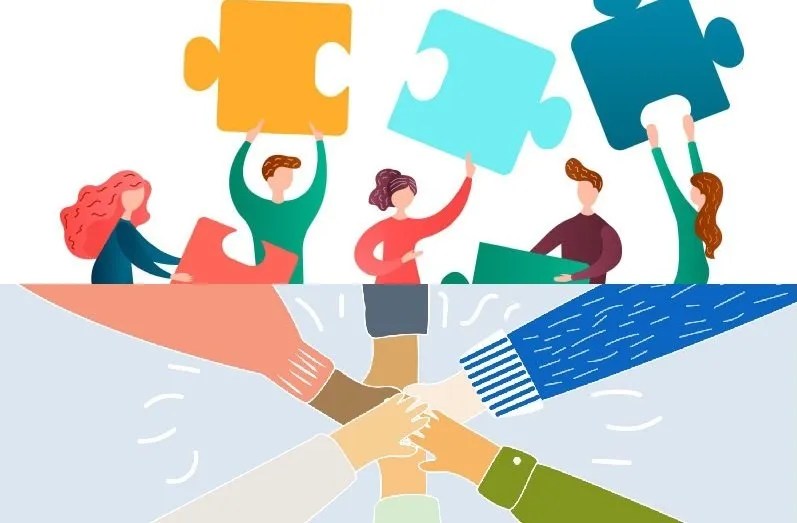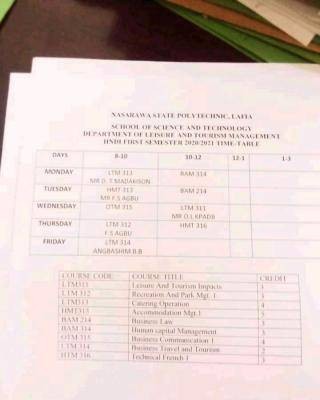
Many businesses, groups and teams face problems that are so complex that no single person possesses all of the necessary skills, creativity, or resources to tackle them alone. Collaboration or consensus building is frequently encouraged in these instances.
What is Consensus Building?
Also known as collaborative issue solving or collaboration, is a conflict-resolution approach mainly used to settle complicated, multiparty disputes. Consensus building, like town meetings, is built on ideas of local engagement and decision-making ownership. In an ideal world, the reached consensus will satisfy all relevant stakeholder interests, resulting in unanimity. While no one gets all they desire at first, the consensus is formed when everyone accepts that whatever is proposed can be lived with.
Effective consensus building leads to conclusions that have been carefully considered, encompass a variety of perspectives and experiences, and may result in the best decision feasible given the set of interests that have come together for a specific goal. On the other hand, consensus building can sometimes be used to gain support for a strategy by making individuals feel like they have been adequately consulted.
Building consensus is a decision-making process. It usually requires multiple stages that allow a group to first ‘diverge’ in their thought before coming together to make a decision/solution that everyone agrees on.
Importance of Consensus Building
Using consensus-building procedures to solve multiparty challenges can have some importance. These importance include:
- It improves the quality of the solutions that the parties come up with. This is because answers are based on a thorough examination of the situation. In building a consensus, each partner has a unique viewpoint, many more perspectives are examined than if the response were established just by a few experts or a small group of people. This diversity of views may lead to novel solutions. Furthermore, because stakeholders can apply various resources based on tasks delegated to them to solve the problem, the group’s capacity to respond to it is increased. Bringing in all interested parties might also help avoid a deadlock or impasse.
- It allows people to better understand the process to participate in the consensus-building process. This is generally preferable to have a representative work on the problem who is detached from it. Participation in the problem-solving process will increase acceptance of the solution and willingness to put it into action. The participative process may also aid in the strengthening of previously antagonistic relationships amongst parties.
- Building consensus ensures that the interests of all parties are safeguarded. Because participants make their ultimate judgments, this is achievable. Each party has the opportunity to ensure that their interests are represented in the agreement and that they are involved in signing it. As a result, the outcomes of consensus-building processes are owned by the stakeholders.
- Also, consensus building can enable stakeholder groups to develop mechanisms for dealing with related problems in the future. For instance, during a consensus process,, stakeholders’ contributions could be recorded and deliberated before a consensus is finally reached. If the reason for not taking a particular stand is documented, it could be revisited as a reference point when such an issue occurs in the future.
Techniques for Consensus Building
A normal consensus-building process such as visioning or goal-setting will entail numerous techniques that the entire group will have to work through together. These numerous processes can be handled using diverging and converging techniques. When a group is in the diverging stage, some activities to consider are:
- Ideas exchange
- Hearing and paraphrasing what each other says,
- Asking clarifying questions,
- Brainstorming, etc
Once all of the ideas are on the table, the convergent or prioritizing of ideas could include things like;
- Merging similar ideas,
- Sorting or ranking ideas by the degree of importance,
- Testing for agreement and dealing with disagreement,
- Ensure that everyone is on the same page about the potential final idea under discussion and
- Challenging assumptions to come up with innovative solutions, etc
However, the following techniques are advocated for multi-stakeholder, multi-issue consensus building:
1. Assessment of Stakeholders
A convenor must first bring all parties together to help resolve issues and develop consensus in multi-stakeholder discussions by beginning and supporting a multi-stakeholder process.
A convener, in this sense, is a person or organization with a stake in a problem or situation (it may have well-defined interests or a more general involvement with the issue area, region or nation).
Once a convenor has agreed to bring key stakeholders together, an evaluation should be conducted or commissioned to help determine whether and how to proceed with a consensus-building process. The assessment’s objectives are to:
- Clarify the key issues;
- Identify groups with interest in those issues:
- Learn about the stakeholders’ concerns and interests, as well as their incentives and capacities for reaching a consensus;
- Identify areas of potential agreement and disagreement among the stakeholders;
- Offer a strategy for reaching a consensus (including its goals, ground rules and work plan).
The assessment is a method for gathering information and developing trust and assisting in the design of a process that maximizes the chances of obtaining comprehensive agreement on the most critical issues at hand.
2. Decide on whether or not to proceed following the examination of the assessment by the stakeholders
Following the completion of the assessment, the convener should convene one or more organizational meetings to allow stakeholders to review and alter the proposed process, as well as decide whether or not they wish to participate. The convener and other process sponsors may or may not choose to launch a consensus-building process, depending on the outcome of the initial meeting(s). Those contemplating whether to sponsor and participate in the proposed technique should examine whether it will meet the following criteria:
- Begin with agreement among those participants on some overarching goals and ground principles for the process;
- Participants should represent a wide spectrum of stakeholder interests, especially those whose cooperation is important to success;
- Have a clearly defined relationship to governmental and intergovernmental decision making. If these requirements are met, and key stakeholders decide to proceed with a consensus-building process, the convenor and participating stakeholders should move ahead with the selection of a mediator or facilitator, and set up the first meeting of stakeholders, to review, revise and seek agreement on the goals, ground rules, work plan, and cost-sharing.
3. Initiate a Joint-Fact Finding Process to Handle Complex Scientific and Technical Questions
This stage assists participants in deciding what information they need to obtain and how they will address gaps or discrepancies among technical sources. Joint fact-finding is a method for helping stakeholders in developing a shared knowledge of technical and scientific issues, as well as their policy implications. It can also aid in the resolution of disagreements over scientific and technological procedures, data, conclusions, and interpretations.
4. Deliberation
At this stage, individuals can make significant contributions to accomplishing agreed-upon goals, including good preparation, focusing on interests, exploring choices without committing, and defining shared criteria to guide decision-making. The group can make debates more productive by using competent facilitation and single text drafting in addition to individual employment of mutual gains tactics. One of the most significant resources in achieving consensus is a competent facilitator. The facilitator creates an environment that encourages participants to work together to investigate challenges, engage in productive discourse, and build relationships. The most effective facilitators may focus on the group’s specific duties and dynamics, creating a sense of shared purpose, positive working relationships, and camaraderie. If they are involved early in the process, facilitators can do more than run a nice meeting. Suppose the facilitator joins the process as an assessor or as a facilitator of the first stakeholder meetings to discuss the assessment results and plan the process. In that case, he or she can be of huge assistance in process design and management.
5. Seek Agreement
The group will still need to reach an agreement after going through cooperative fact-finding, clarifying interests, brainstorming to innovate ideas, and producing many suggestions for each conceivable provision. A consensual agreement, in this case, is thus one that may be accepted or “lived with” by all members. The group consensus should, in theory, show substantial support from all stakeholders. For the group to establish consensus, defined as “no dissent,” not all stakeholders must strongly support all components of the accord. To conclude the group’s work, it is always recommended that consensus-building groups seek but do not need unanimous agreement from all members within the time range stipulated at the start of the process.
If unanimity cannot be attained, the group as a whole mustn’t be “kept hostage” by one or a small group of members who might utilize the demand for unanimity to prevent agreement and execution. Before signaling whether or not they can support the final package, it is also critical to verify that representatives have confirmed with their constituents. The way a group handles outstanding issues and dissatisfied participants at the end of a process can determine whether or not the group can reach a consensus.
6. Implementation, Monitoring and Revision
At the end of a consensus-building process, stakeholders are asked to endorse the final proposals. It is critical to create a method for holding the parties accountable for their obligations. Because they are closely aligned with the interests of all stakeholders, some agreements can be almost self-enforcing, requiring no additional resources to implement. Others may necessitate legal or regulatory reforms, more resources, and/or organizational capacity building. To guarantee that the agreement is formalized and implemented, it is critical for the group to state the measures taken and who will be responsible for them.
A consensus-building process’s findings are typically advisory, requiring examination and adoption (partially or wholly) by a group of elected or appointed officials. There should be no surprises if the relationship between the group consensus-building process and final decision-making were clear from the start of the process. Political and institutional pressures beyond the group’s authority, and the control of the decision-makers themselves can, nonetheless, pose significant problems in some situations.
For instance, a group could agree on a plan to significantly increase the availability of primary health care facilities in rural areas. The plan would be included in the Ministry of Health’s budget proposal and the country’s next medium-term development plan. In reality, if the government changes after the process begin, the health minister may change, and the Ministry’s commitment to primary health care may be weakened. Even if the Ministry remained enthusiastic, changes in the national legislature could make obtaining budgetary backing for the initiative difficult.
When the process results are unable to bind political or institutional leaders fully, it is critical to design a strategy for influencing decision-makers based on whatever sense of shared identity and shared goals the group has developed. Face-to-face meetings between a number of group participants and senior government officials; formal submission of group recommendations to the appropriate body, with media coverage; and dialogue with international aid agencies to encourage them to priorities the program in their discussions with the government.
Even when sufficient resources (financial, political, and organizational) are available to support implementation, periodic monitoring and assessment are required to determine whether implementation is meeting the group’s objectives and responding to new information and circumstances.
More so, when implementing consensus building, the conveyor or facilitator should;
- Assist team members in focusing on significant ideas rather than precise details when reviewing action recommendations. This technique might be used when team members focus on specific aspects of an issue and lose sight of their shared goal. This works because teams often dispute or come apart over little details that shift the focus of the group conversation back to a more fundamental level.
- Encourage brainstorming about the advantages and disadvantages of the alternative when a new proposal is presented. You want the team to focus on the benefits of the idea before examining the drawbacks. This is critical since some people react negatively to nearly any new suggestion; team members may refrain from bringing forth new ideas for fear of being shot down.
- Clarify what team members would need to endorse a proposal if they did not previously support it. This technique can be employed when you sense that the team is on the verge of reaching a consensus, but a tiny group of people still resist. The information they submit is utilized to change the idea to be acceptable to everyone.
- Encourage members to listen to one another’s views with respect, empathy, and openness, modifying a plan until all critical needs are addressed.
Examples of Consensus Building
The following are common examples of consensus building
Negotiating:
Negotiation is a fundamental aspect of politics, business, and life in general that can be used to resolve conflicts, collaborate, and engage in constructive exchanges including trade, partnerships, and employment. Peace, stability, economic prosperity, and improved quality of life can all be achieved via effective negotiation.
Prioritizing:
Accepting everyone’s ideas and prioritizing them such that only the finest ideas, in the group’s perspective, are pursued.
Voting:
Choosing to support the outcome of a vote as a group. A product development team, for example, may have three product designs but can only implement one. Each team member casts a vote for the product they believe will be the most financially successful, with all members pledging to back the winner. Also, a political party or group may cast a vote to decide on who represents them in different situations or instances.
Prioritizing:
Accepting everyone’s ideas and prioritizing them such that only the finest ideas, in the group’s perspective, are pursued.
Leadership:
Leadership is the skill of persuading others to move in the same direction with or without formal authority. A leader’s main purpose is to foster consensus and excitement for common aims and techniques. Ideally, once a leader is appointed in a group the process of consensus building has commenced except there are biased interests in different courses.
Facilitation:
This usually entails designating a neutral person to lead a conversation or series of conversations using well-known problem-solving and decision-making procedures in an organized manner to reach universal consensus.
Mediation:
When a group’s disagreements become intractable, an independent mediator may be called in to help them reach an agreement.
The purpose of this article is to provide a definition of consensus building, as well as instances of consensus building. While a comprehensive, formal, consensus-based decision-making approach is not always required or acceptable, anyone can apply the spirit of consensus-building to any group process. In practically any setting, these attitudes, abilities, and postures can assist a group in becoming more creative, inclusive, and healthy.




